




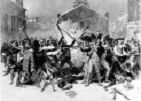
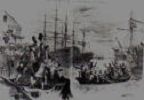







TLW's Bostonscope™ (Boston Historyscope) |
By T.L. Winslow (TLW), the Historyscoper™ |
© Copyright by T.L. Winslow. All Rights Reserved. |
Original Pub. Date: June 17, 2017. Last Update: Apr. 25, 2018. |
Westerners are not only known as history ignoramuses, but double dumbass history ignoramuses when it comes to Boston history. Since I'm the one-and-only Historyscoper (tm), let me quickly bring you up to speed before you dive into my Master Historyscope.


On Mar. 22, 1630 (Apr. 7?) 700-odd (400-odd?) Massachusetts Bay Colonists seeking to escape the Thirty Years' War and its economic slump sail in seven ships from Southampton, England for North Am.; Arabella carries John Winthrop (1588-1649) and the charter; en route John Winthrop delivers the sermon Model of Christian Charity, exhorting good Puritans to be like a "City Upon a Hill" and work to construct a Bible-thumping theocratic society in America that will "shame the faces of many of God's worthy servants", else face God's wrath, shaping American politics seemingly forever (until ?); after landing at Salem, Mass. on June 25, on Sept. 17 (Sat. Old Style) (Tues. New Style) they found the town of Boston (formerly Shawmut) on the 800-acre Shawmut Peninsula surrounded by tidal marshes, deeply indented by coves, creeks and inlets, and dominated by three hills, with a narrow 1-mi.-long frequently-submerged neck joining it with the mainland; John Endicott (Endecott) (1588-1665) becomes gov. #1 of the Mass. Bay Colony, with capital at Charlestown, Mass. (originally Mishawum) on the Mystic River; the first law against gambling in Britsh North Am. is enacted; over the next few cents. the area is gradually filled in, increasing it to 1.8K acres; Medford, Mass. (originally Mistik) is founded as part of Charlestown; John Winthrop (gov. #1 of Mass. Bay Colony) begins keeping a Journal; on Nov. 9 the Boston-Charleston Ferry opens, starting at Noddle's Island, where English Anglican settler Samuel Maverick (1602-70) buys black slaves in 1638, becoming one of the earliest slave owners in Mass.; by the end of the year 17 more ships with another 1K colonists arrive, and by 1642 16K more follow; over 80K colonists leave England for greener pastures (New World, Ireland, Netherlands, Rhineland) in the Great Puritan Migration in this decade (1620-40), mostly Puritans fleeing Charles I for the Mass. Bay Colony, many of them as indentured servants; by 1640 20K settle in Mass. Bay Colony, and 55K total go to the New World, half settling in New England; the total pop. of the Am. colonies this year is only 4.6K; 35 mi. x 1 mi. Newtown (Newe Towne) (New City) is founded in Mass. on the N side of the Charles River opposite Boston 10 years after the Pilgrims land at Plymouth Rock; in 1638 it changes its name to Cambridge, Mass., becoming a univ. town.; it is later subdivided to form the additional towns of Newton (1691), Lexington (1713), Brighton (1837), and Arlington (1846).
In 1634 Boston Common in Boston, Mass. is begun, finding use as a cow pasture, leading to overgrazing, with usage limited to 70 cows at a time until they are officially banned in 1830 by mayor Harrison Gray Otis- so what do we call this area?
On Sept. 14, 1716 Boston Lighthouse on Little Brewster Island, Mass. begins operation, becoming the first Am. lighthouse; it is automated in 1998.

On Dec. 29, 1723 the Anglican Georgian-style Old North (Christ) Church in Boston, Mass. (193 Salem St.), designed by William Price, and built with bricks from Medford and designed to copy Sir Christopher Wren's St. Paul's Cathedral in London (whose tall spire dwarfs the other bldgs. in North End) holds its first service, becoming Boston's oldest church bldg. surviving to modern times, made famous as the scene of Paul Revere's Midnight Ride (Apr. 18, 1775); on Oct. 23 Increase Mather (b. 1639) dies, and his son Cotton Mather (1663-1728) becomes minister of Boston's original North Church, which is a different (Puritan) church.

In 1729 Old South Church (Meeting House) in Boston, Mass. is built, becoming the largest bldg. in Boston, used by 5K colonists as the HQ for organizing the Boston Tea Party of Dec. 16, 1773.





On Mar. 5, 1770 (Mon.) after a young apprentice insults redcoat "lobster back" sentry Pvt. Hugh White guarding the customs house, a fight breaks out, snowballs and rocks fly, the sentry calls for reinforcements, a firebell rings, and a Boston mob comes out in force; "Fire and be damned" the crowd taunts, hitting nine soldiers with missiles and knocking one down; after he rises to his feet, he fires into the crowd, and the other British soldiers respond, killing three and wounding eight, of whom two later die; the Boston Massacre (Incident on King Street) fans the fires of public support for rebellion; mulatto runaway-slave-turned-sailor Crispus Attucks (b. 1723) is the first killed, and as he is black he later becomes a superstar; on Mar. 13 nine soldiers and their commanding officer Capt. Thomas Preston are indicted for murder, and defended by John Adams (1735-1826) and Josiah Quincy II (Jr.); after the Boston Massacre Trial, on Dec. 5 Pvt. Hugh Montgomery and Matthew Kilroy (killer of Attucks) are convicted of manslaughter and branded on their right thumbs; Preston is acquitted next Mar. 6, and is spotted by John Adams in London in the 1780s; Adams later writes "The part I took in defence of Capt. Preston and the soldiers... was one of the best pieces of service I ever rendered my country. Judgment of death against those soldiers would have been a foul... stain upon this country"; Mass. acting gov. (since Aug. 2, 1769) Thomas Hutchinson (1711-80) is virtually forced by the Yankee rebels, led by firebrand Samuel Adams (1722-1803) (2nd cousin of John Adams) to order the removal of British troops from Boston, which he does after threatening high treason charges against anybody attacking them, saying "The loss we have sustained is greater than we can bear"; for drawing the line and showing how loyal he is (and saving British face?), Hutchinson becomes royal gov. of the Mass. colony in Nov. (until 1774).





The political protest that turns Americans into coffee drinkers? On Dec. 16, 1773 (Thur.) at 4 p.m. about 50 colonials and members of the Committee of Correspondence meet at the home of Boston Gazette ed. Benjamin Edes (1732-1803), who serves them from an ever-full China rum punchbowl (replentished by his son Peter) (later given to the Mass. Historical Society); about 6 p.m. Samuel Adams says "This meeting can do nothing more to save the country", and the drunken bums, er, patriots leave to get more drunk at the Green Dragon Tavern on Union St. in North End, Boston (founded 1743), home of the Freemason Lodge of St. Andrew, then dress up in Edes' office and stage the Boston Tea Party during the moonlit night, as a mob of 200 Am. colonists, incl. Samuel Adams (1722-1803), John Hancock (1737-93), Thomas Wells (a blacksmith), and Samuel Smith (1714-85) (grandfather of Mormonism founder Joseph Smith Jr.) (not really - just Mormon propaganda?) disguised as negroes and Mohawks with soot-darkened faces (the English taxes were based on a desire to make the Americans pay their expenses in the French and Indian War - get it?) gather at Griffin's Wharf, then board and dump three shiploads (342 chests) (45 tons) of tea valued at £18K into the S end of Boston Harbor (between modern-day Congress St., Atlantic Ave., and Northern Ave.), while another 2K-8K people urge them on from the docks; the ships they take over are the Dartmouth, Eleanor, and Beaver (dart eleanor beaver mouth jokes here?); the William was destroyed in a storm and didn't make it; four days later Paul Revere gallops into New York City with the news, and 18-y.-o. Charlestown, West Indies-born Alexander Hamilton (1755-1804), a student at King's (later Columbia) College in New York pub. his first political piece in John Holt's New-York Journal, titled Defence and Destruction of the Tea; Boston merchants are not happy with the wanton destruction of property by the rebels, and Ben Franklin calls on Boston to pay for the tea and apologize to prevent the Brits from closing the port, but instead of trying to undermine the credibility of the radicals and defuse the situation, mad king George III writes to Lord North that "The colonists must either submit or triumph", and instructs him to discipline all of Boston.

In 1793 Mass. engineer Col. "Father of Am. Civil Engineering" Loammi Baldwin (1744-1807) (who fought in the 1775 Battle of Lexington-Concord and crossed the Delaware River on Xmas 1776 with George Washington) begins the 27-mi. Middlesex Canal in Mass. (finished 1803) connecting the port of Boston with the Merrimack River for barge traffic, opening the interior of New England to commerce and bankrupting the Merrimack River port of Newburyport, Mass.; the canal is used until 1851.

On Feb. 23, 1822 the city of Boston, Mass. on Mass. Bay, at the mouths of the Charles and Mystic Rivers is granted a charter to incorporate as a city, with John Phillips (1770-1823) (father of abolitionist Wendell Phillips) as mayor #1 on May 1 (until May 29, 1823).
In 1846 the town of Revere, Mass. is incorporated from the 1626 settlement of Rumney Marsh, which was part of Boston until 1739, when it became part of Chelsea.
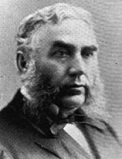
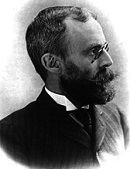
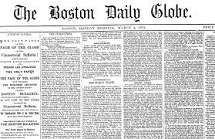
On Mar. 4, 1873 The Boston Globe (originally "The Boston Daily Globe") 4-cent morning daily newspaper is founded in Boston, Mass. with $150K by six businessmen incl. Jordan Marsh dept. store magnate Eber Dyer Jordan Sr. (1822-95) and Gen. Charles Henry Taylor Taylor (1846-1921), who is hired in Aug. 1873 as business mgr., immediately lowering the price to 2 cents, requiring impartial news reporting, and pioneering stock quotations, women's pages, and sports pages, raising circ. from 8K to 30K in three weeks; in 1877 it launches a Sun. ed., which in 1892 merges with the rival "Boston Weekly Globe"; in 1878 "The Boston Evening Globe" is launched (until 1979); the ed. staff is known for being dominated by Roman Catholics; it goes on to become one of the top-10 U.S. daily newpapers by the 1970s; in 1993 it is acquired by The New York Times for $1.1B, who sell it in 2013 to Boston Red Sox owner John W. Henry for $70M.
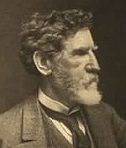
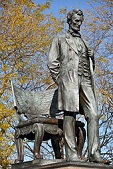
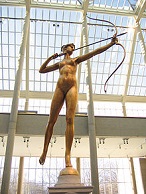
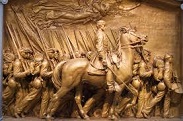

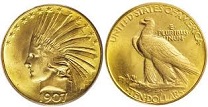
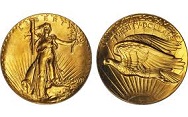
In 1887 Dublin, Ireland-born Am. sculptor Augustus Saint-Gaudens (1848-1907) sculpts a 12-ft. (3.7m) bronze statue of Abraham Lincoln: The Man (Standing Lincoln) for Lincoln Park in Chicago, Ill.; 10K attend the unveiling incl. Lincoln's grandson Abraham Lincoln II, with the New York Evening Post calling it "the most important achievement American sculpture has yet produced"; Stanford White designs a semicircular platform (exedra) for it. In 1892-3 he sculpts Diana (of the Tower), which ends up on top of the Madison Square Garden in 1893-1925, followed in 1932 by the Philadelphia Museum of Art. On May 31, 1897 he unveils the bronze relief Robert Gould Shaw Memorial (begun 1884) at 24 Beacon St. in Boston Common in Mass., depicting Union Col. Robert Gould Shaw (1837-63) leading the 54th Regiment Mass. Volunteer Infantry (first all-black regiment in New England) down Beacon St. on May 28, 1863 before being KIA in Morris Island, S.C. on July 18, 1863. In 1907 the U.S. Mint discontinues the Coronet design (begun 1838 for the eagle and 1949 for the double eagle) and begins issuing $10 Indian Head Eagle coins and $20 Standing Liberty Double Eagle coins (until 1933), all designed by Dublin, Ireland-born Am. sculptor Augustus Saint-Gaudens (1848-1907), who works from a studio in Cornish, N.H.; Pres. Roosevelt forbids the motto "In God We Trust", considering it in bad taste; Pres. Taft restores it in 1908.
The American Irish become Mister Feelgood? By the 1920s the Irish have "arrived" in the U.S., and could probably run it if they just weren't !?!? Roman Catholic?; "There are judges by the dozen, incl. a third of the Supreme Court, three Cardinals, Senators, multi-millionaires and captains of industry by the score, like Mr. Henry Ford, the motor king, Mr. Doheny, who dominates the petrol industry, Mr. Thomas F. Ryan, the partner of King Leopold in the Congo diamond mines, Mr. Mellon, the secy. to the Treasury, Mr. Doughtery, the Atty.-Gen., Mr. Smith, the gov. of New York, Mr. Hylan, the mayor of New York, Mr. Tumulty, private secy. to Pres. Wilson, Gen. O'Ryan of the American Army, Dudly Malone, chief official of the port of New York, J.R. Ryan, the head of the Copper Trail, John Mitchel, mayor of New York, Col. Concanon, chmn. of the White Star Line, and J.A. Farrell, Pres. of the U.S. Steel Co." (Terence Sheehy) - we've been ratted out, boys?


In 1954 the first 10 Zambonis (ice rink resurfacers) are delivered by Eureka, Utah-born inventor Frank Joseph Zamboni Jr. (1901-88) to the city of Boston, Mass.

In 1961 the Boston Irish Gang War (ends 1966) begins between the McLaughlin Gang of Charlestown, Mass., led by Bernard "Bernie" McLaughlin, and the Winter Hill Gang of Somerville (N of Boston), Mass., led by James Joseph "Buddy" McLean (1930-65), who kills Bernie then ends up killed, although his gang, led (until 1979) by Italian-German mobster Howie Winter (1929-) becomes #1 among the Irish gangs after the FBI begins using its members as informants in return for shielding them from prosecution to bring down the rival Patriarcha crime family, while they murder over 20 people over the next three decades.
On Mar. 18, 1990 (1:24 a.m.) the Gardner Art Heist (biggest art theft until ?) sees robbers dressed as police walk out with 13 blue-chip art works from the Isabella Stewart Gardner Museum in Boston, Mass., incl. Rembrandt's Storm on the Sea of Galilee, A Lady and Gentleman in Black, Vermeer's The Concert (one of only 35 Vermeers in existence), Manet's Chez Tortoni and five Degas, worth $300M, all from an uninsured museum, becoming the biggest art theft in U.S. history; the case is solved in ?.
On July 14, 2015 the gigantic winter 2015 snow pile in Boston, Mass. finally melts.